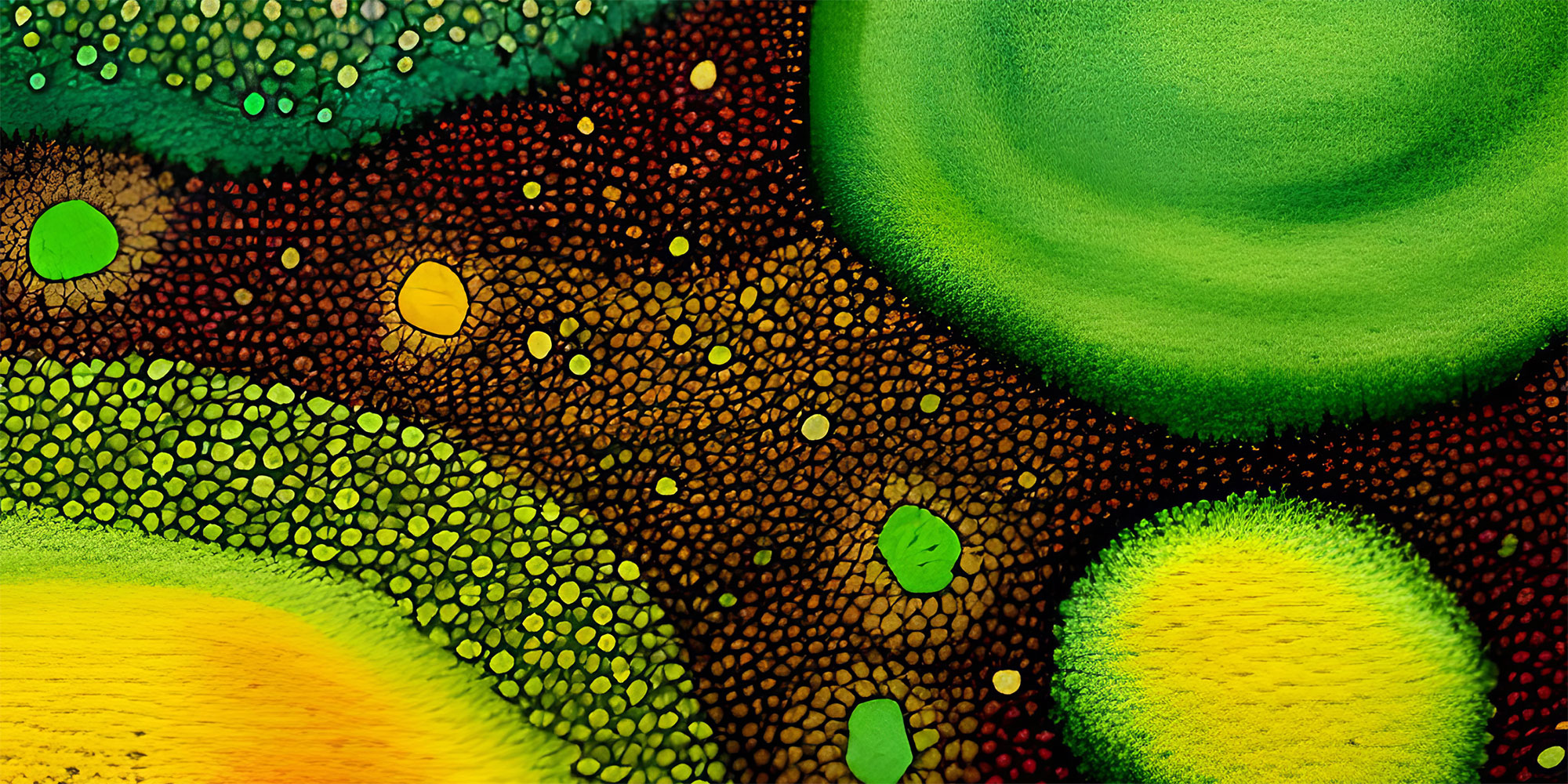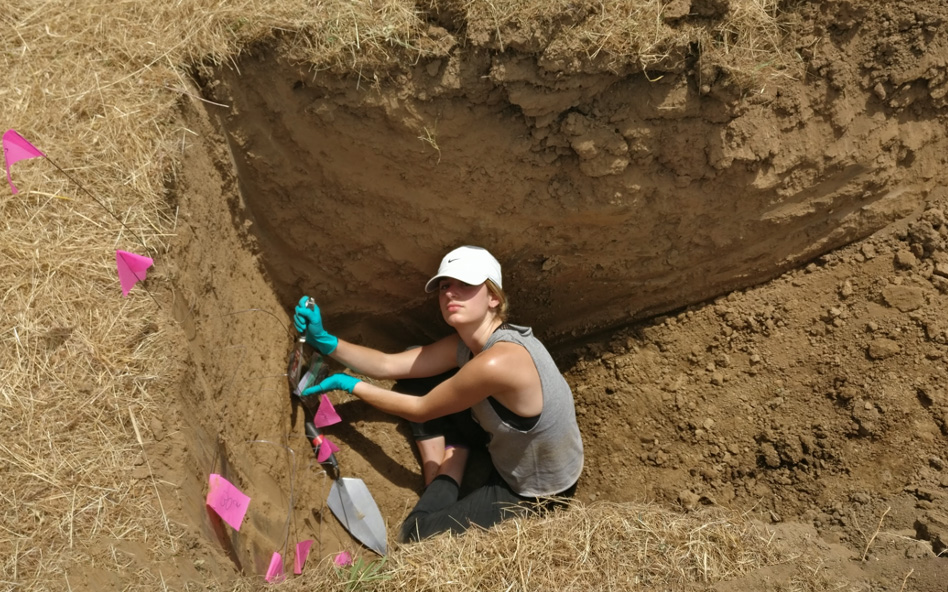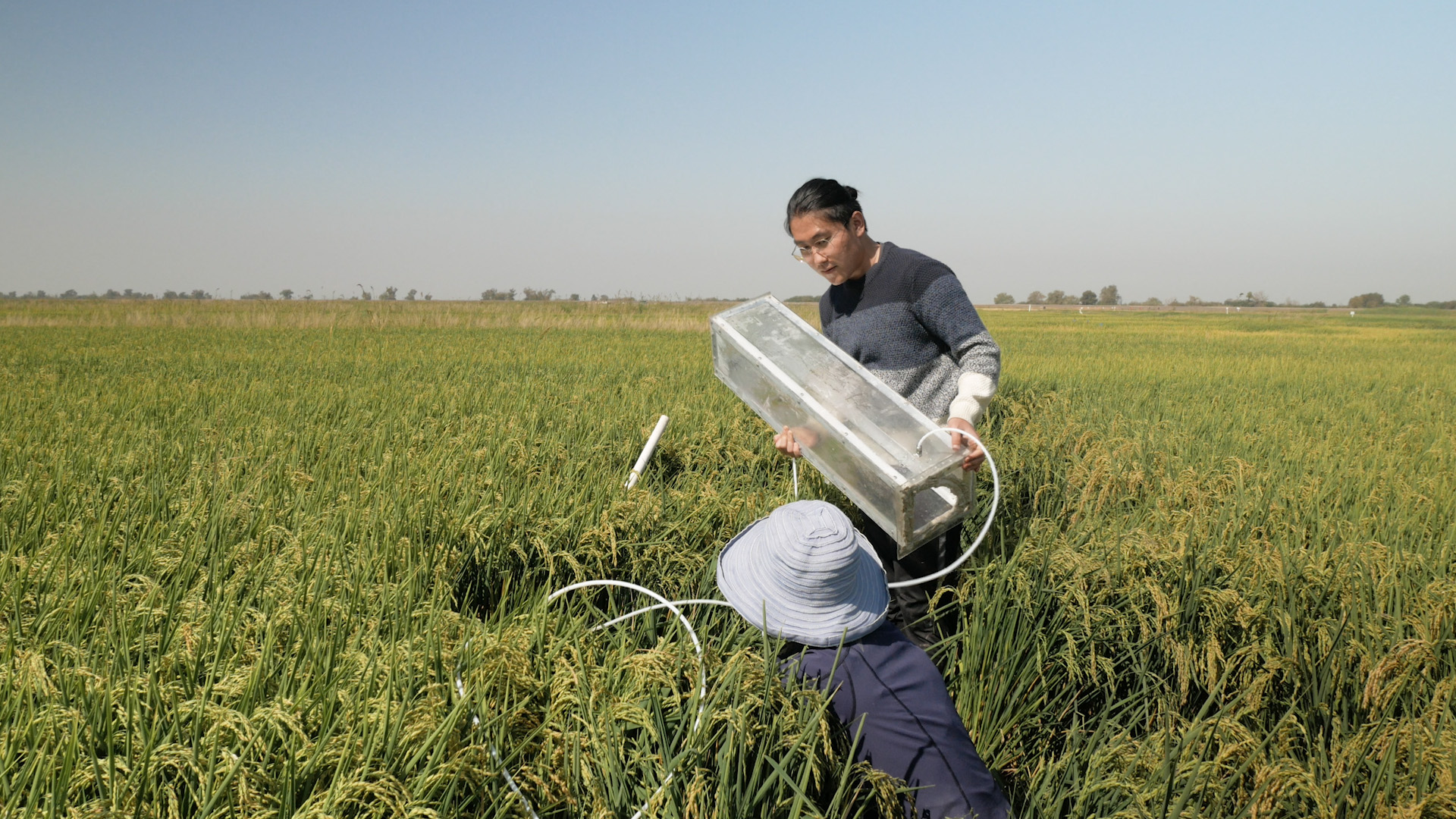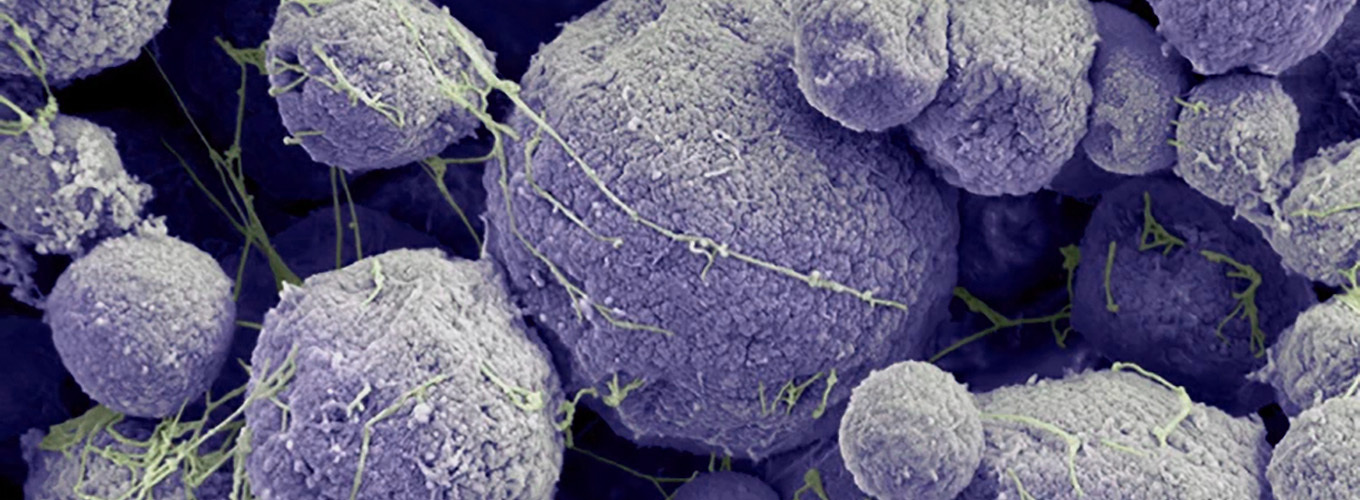
IGI Researchers Study How Rainy Season Awakens Bacteria – and the Viruses that Hunt Them
When we think about greenhouse gasses, we usually think about cars, manufacturing and animal agriculture. But soil microbes are also a major source of greenhouse gas emissions. Some microbes directly emit methane into the atmosphere as part of their metabolic process. In other cases, when soil microbes die, they release their carbon-rich contents, which enter the atmosphere as greenhouse gasses.

In California and other temperate climates, soil microbes have annual cycles. They are largely dormant in the dry summer and early fall. When the first rain comes, it triggers the beginning of the growing season for many plants, and enlivens the microbial community, or microbiome, in the soil. During the period immediately following this rain (“wet-up”), bacteria and other unicellular soil microbes multiply rapidly. A massive die-off of microbes happens simultaneously, releasing a huge burst of carbon dioxide into the atmosphere.

In a new paper in Nature Communications, first author Alexa Nicolas combined the pioneering techniques of IGI’s Director of Microbiology Jill Banfield and IGI affiliate Mary Firestone to get a closer look at what happens to soil microbiomes at wet-up. With Banfield’s techniques for genome-resolved metagenomics, the team could identify which types of microbes were present in the soil and roughly how common they were. They could then artificially induce wet-up by adding water with a molecular label to the soil, a system used by the Firestone lab called “stable-isotope labeling.” The DNA sequences that bore the added molecular label would come from bacteria, archaea, and viruses that were multiplying rapidly, taking up the molecule to make new copies of DNA. In this way, the researchers could get close snapshots of community change during the wet-up period.
Nichols and the research team found that not only does wet-up induce massive multiplication of bacteria and other unicellular organisms in the soil, but also a massive multiplication of the viruses that prey on them. Significantly, it is estimated that almost half of the microbial die-off and resulting carbon release during the first week of wet-up can be attributed to soil viruses.
It’s a call to those of us who study microbiomes to say, ‘Look, you can’t design an experiment based on our assumptions of what microbes do in soil.’ Viruses are their own key component to be considered.
The team tried to address another mystery: where are these viruses during the dry season? It was thought that they might be hiding in the dormant bacterial cells, but the data from these studies don’t support that. Instead, it appears that viruses persist on their own in the soil. Essentially, dry soil is serving as a seed bank for a huge number of bacteria-hunting viruses that lie dormant as they wait for wet-up.

“We’ve been studying this fascinating moment of the soil microbiome reawakening after being dormant for so long,” says Nicolas. “But it’s also really exciting because it’s a model system to understand how soils retain and release carbon.”
Ultimately, gaining a deeper understanding of the dynamics of soil microbiome will help us develop new strategies to help keep carbon in the soil.

 By
Hope Henderson
By
Hope Henderson



